What's New in v4.0
Launch date: January 16, 2023
New Technology in V4.0
V4.0 introduces a new technology: Generative Models.
Generative models in natural language processing (NLP) are a type of machine learning algorithm that are used to generate text and other types of natural language data.
These models can be trained on a large dataset of text and are capable of learning the underlying structures and patterns of the language.
Once trained, these models can generate new text that serves different purposes.
In the context of summarization, a generative model can be used to automatically generate a shorter version of a longer text document, while retaining the most important information and ideas from the original text.
NLP enables our models to take long, complex medical encounters and turn them into a succinct, easy-to-understand summaries
Generative Models have been implemented in the Digital Abstracts in several sections to provide a better narrative and improve the succinctness of these sections.
Case Summary
“What is this case about?”
There is a new addition of ״case summary” at the top of the Case Overview. This is an automatically generated summary created by generative models that gives a “preview” of the case narrative.
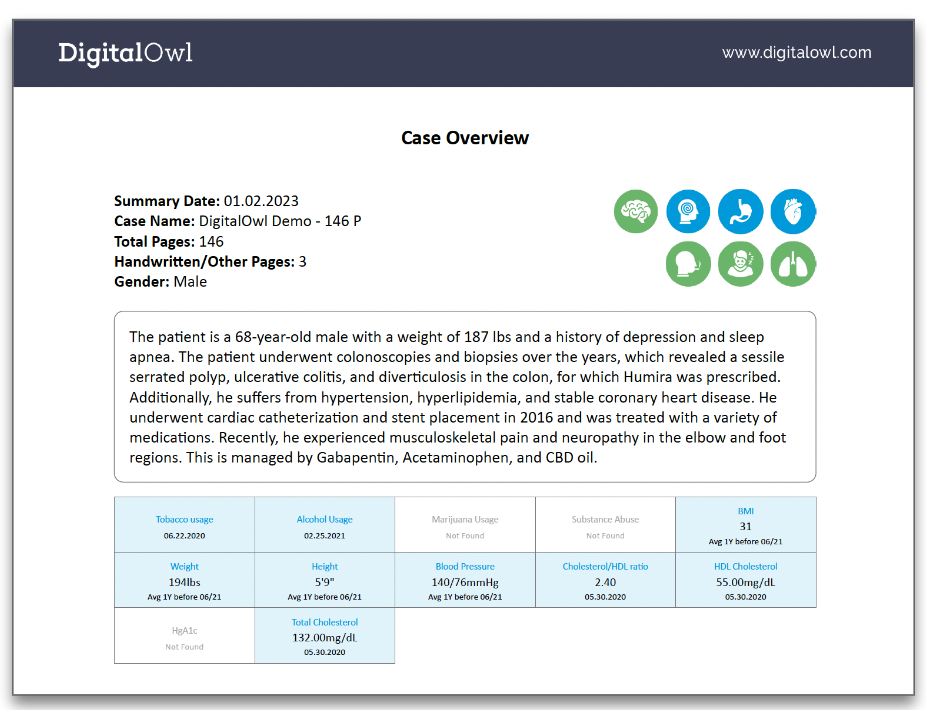
New Document Abstract Section
Summaries created by generative models have been introduced to enhance the Digital Abstracts with a new section within the Document Abstract. The "Abstract" section provides more succinct document abstracts in the form of short, human-like summaries of all the encounters in the source documents.
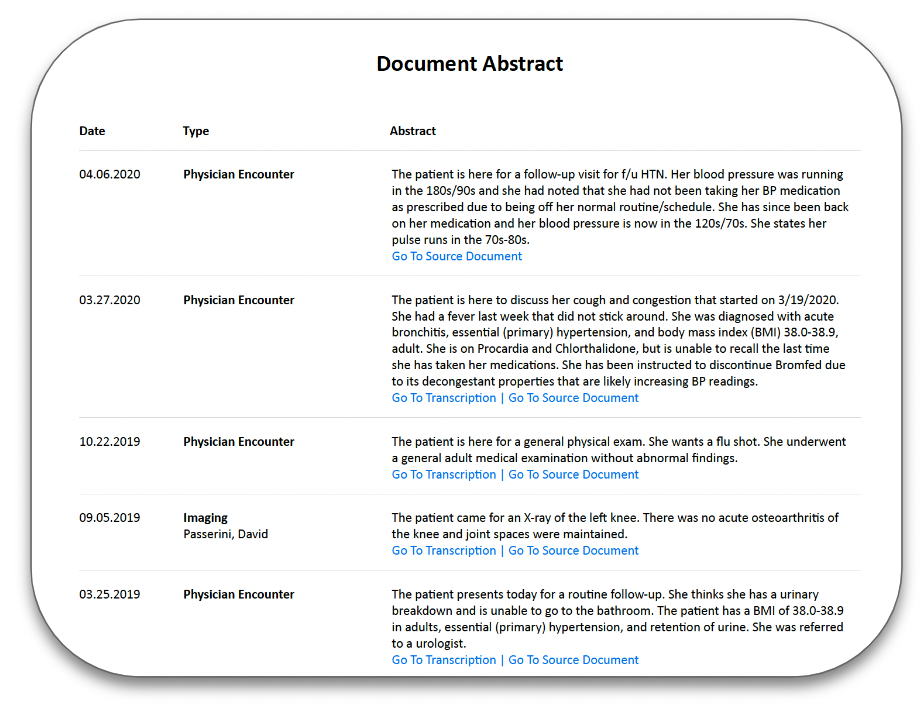
Summaries Based on Generative Text
In addition to the case summary and the new abstract section, summaries based on generative text have been added into the following sections, replacing the text-to-text transcription:
- Recent encounters
- Recent diagnostic reports
- Providers reference
New Chronological Overview
We have replaced the Impairment and Notable Procedures lists in V3.7. The impairments are now listed in chronological order from the most recent to the oldest based on the year presented is the first mention of item in the source documents.
The Chronological Overview includes the following:
- Diseases and syndromes
- Therapeutic procedures
- Events, such as “accident”, “injury”
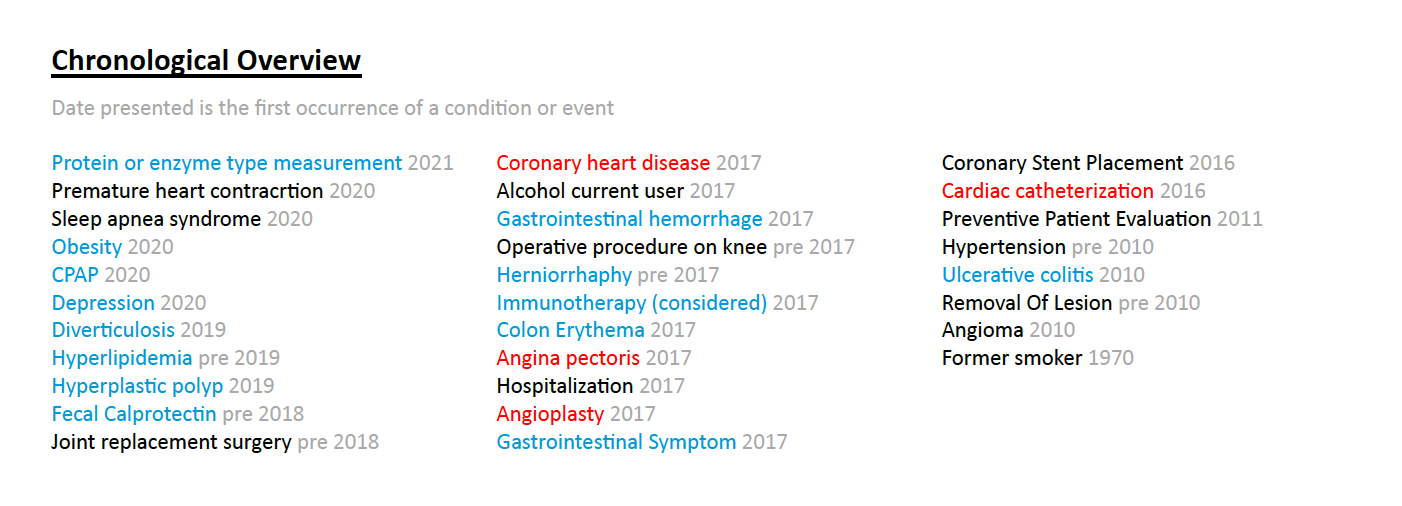
Redesigned Reference Sections
This applies to the following sections in the "Supplemental Documents": Conditions Reference, Family History, Diagnostic and Therapeutic Reference.
The new design removes the duplications that were present in previous versions. As such, the same extraction will no longer appear multiple times in different sections. This eliminates the need to jump to the source page in order to examine the source text, as the citations are already presented.
In addition, we've added flags and procedures values as colored tags.
Conditions Reference:
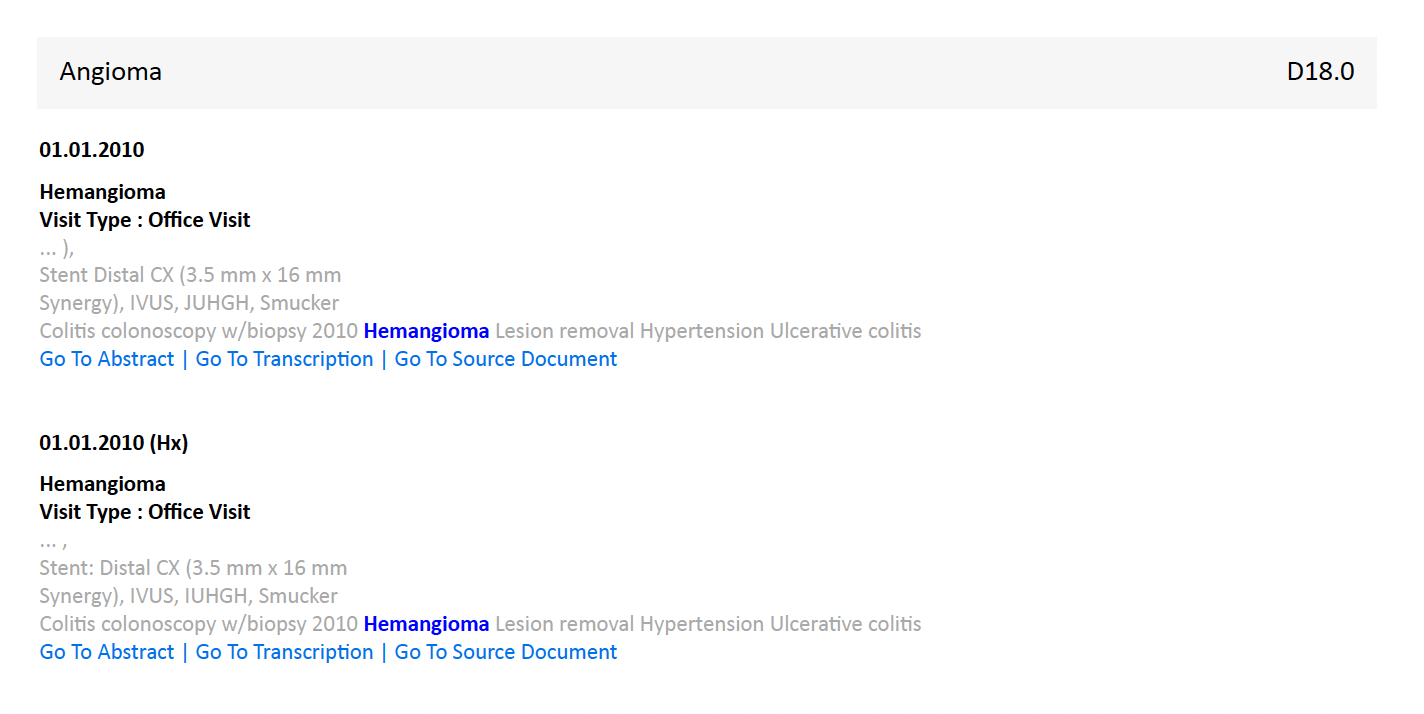
Procedures Reference:
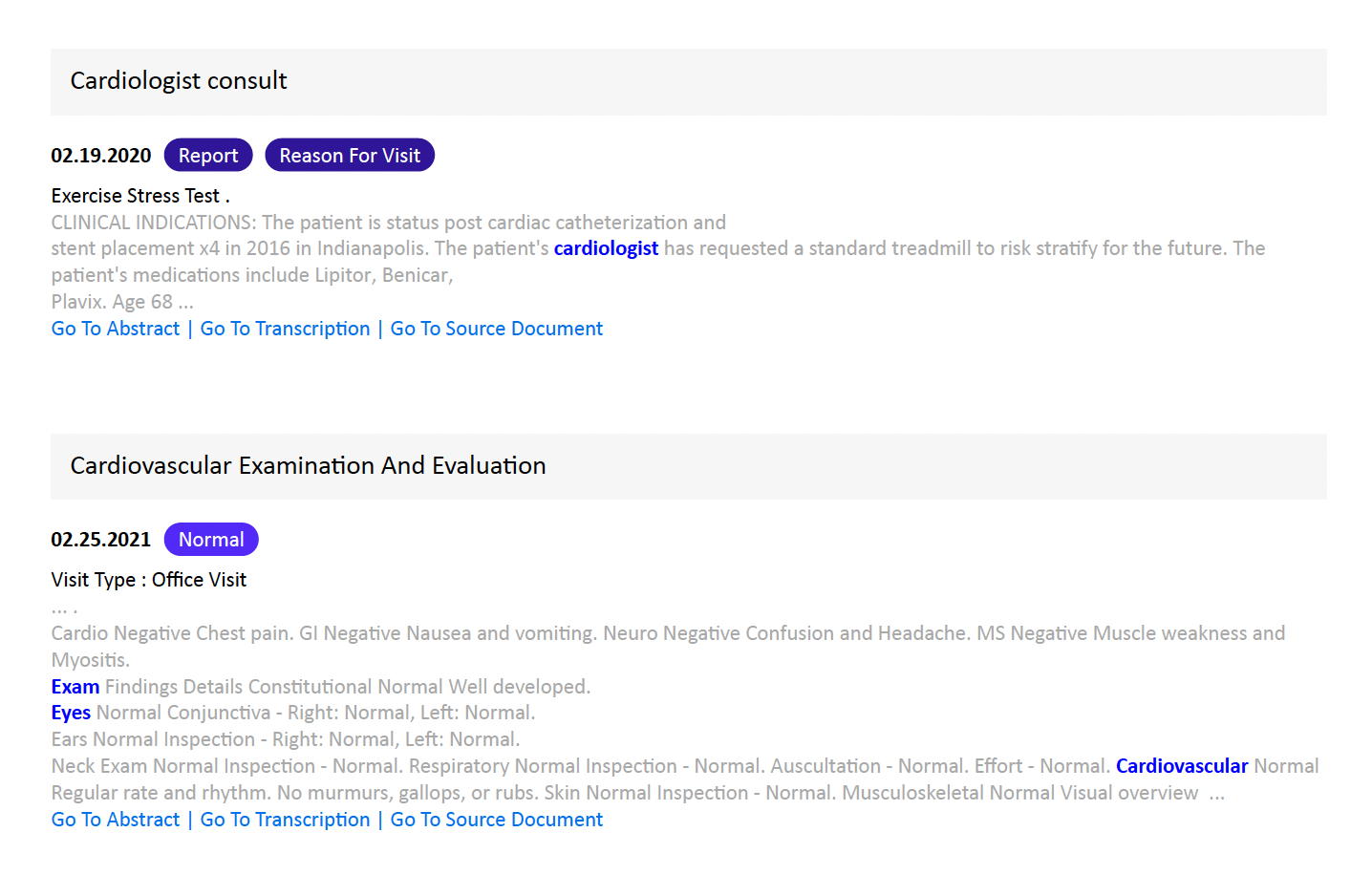
Provider reference
There's a new bookmark within the Supplemental Documents section, enabling navigation by providers. All source documents related to the chosen provider are presented with a generative summary per each encounter.
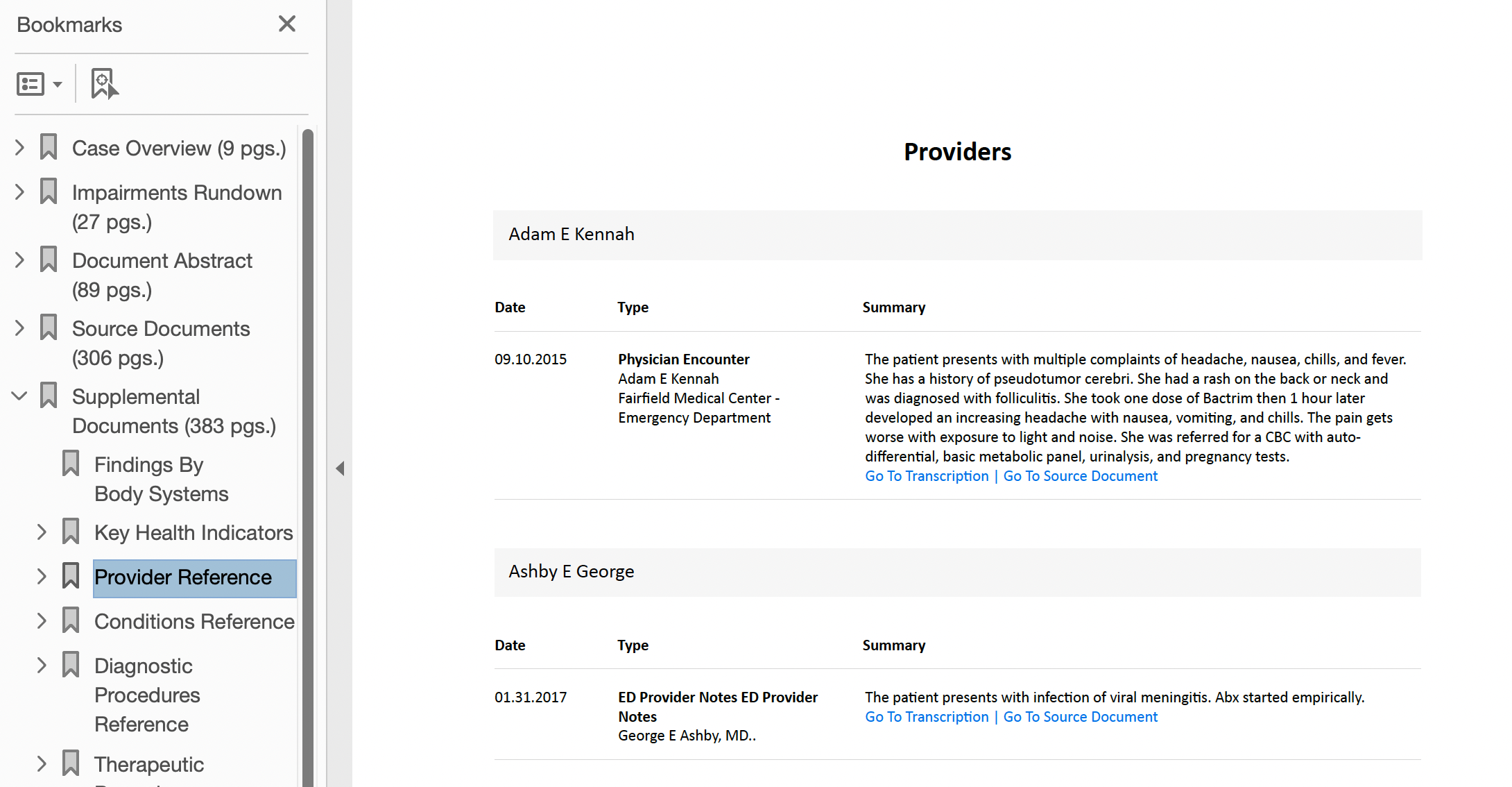
Blood and Urine Profiles
There are new sections within "Lab Results" in the Supplemental Documents.
These provide a full profile including the latest measurement available in the source documents for each of the values within the profile.
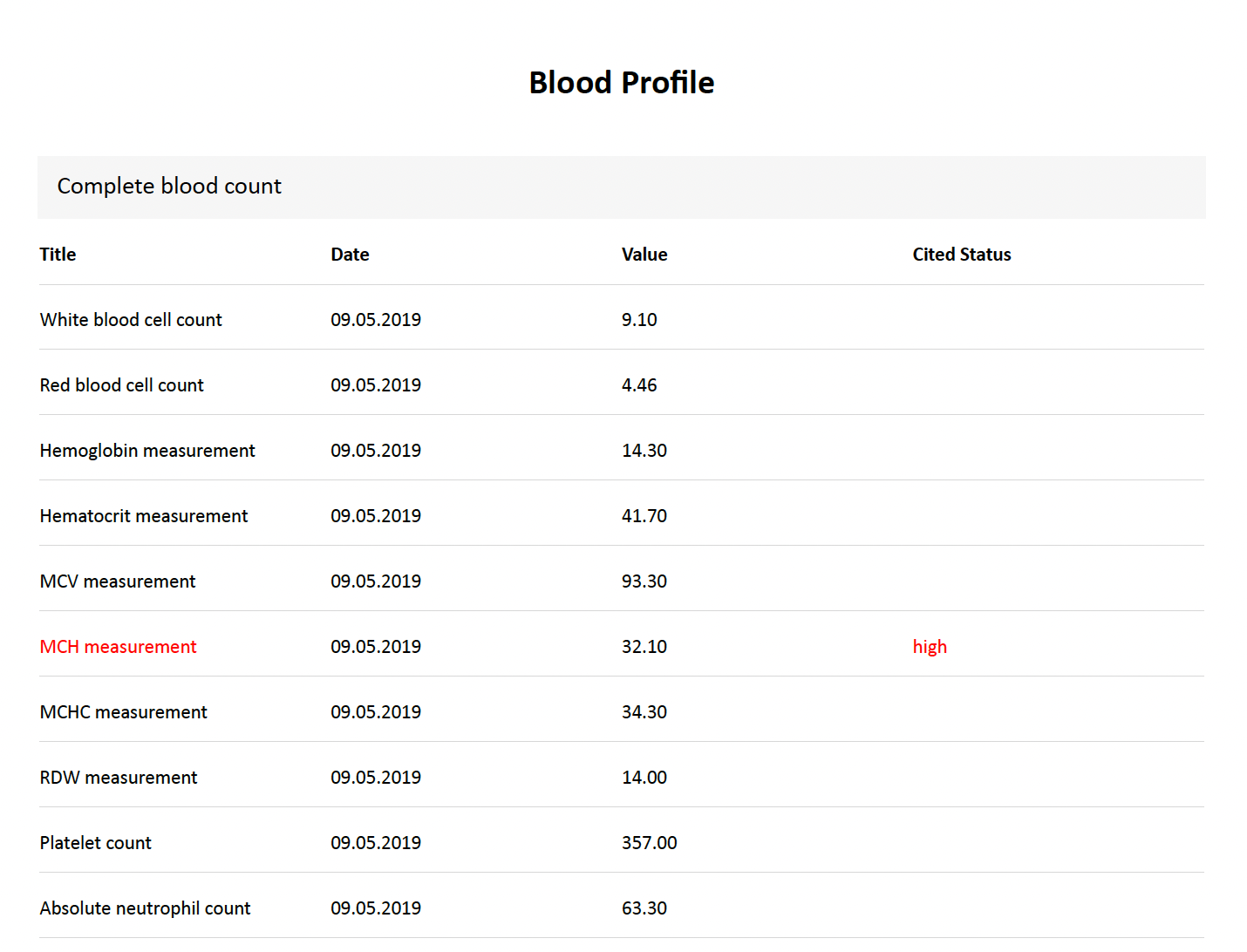
Updated 30 days ago